Paestum is one of the best places in Italy to see Greek ruins. Home to three ancient Greek temples dating back to 450 BC, this UNESCO World Heritage Site is often an overlooked destination in Italy.
The ancient city of Paestum sits just to the south of Salerno and the Amalfi Coast. For those with an interest in history or archaeology, Paestum can be visited as a day trip from the Amalfi Coast or on a road trip through Italy.
In this guide, we cover what you need to know to visit Paestum, why a visit here is important, and whether or not it is worth it.
What is Paestum?
Beginning in the 8th century BC, the southern portion of Italy (mainly Campania, Sicily, and Calabria) was colonized by the Greeks. The town of Paestum, which was called Poseidonia at the time, was founded sometime around 600 BC. It gets its name for the Greek god of the sea.
Poseidonia was a thriving Greek city. The agora, a series of roads, and several temples were built in town. After the Pyrrhic War, Poseidonia became the Roman city of Paestum in 273 BC. Roman structures were built on top of some of the Greek sites, such as a Roman amphitheater and Roman Forum.
Paestum went into decline and then was abandoned during the Middle Ages. The area was rediscovered in the 16th century and recently was listed as a UNESCO World Heritage Site.
What remains today are three well-preserved Greek temples as well as the amphitheater, the remains of thermal baths and houses, and the roads that run through the city.
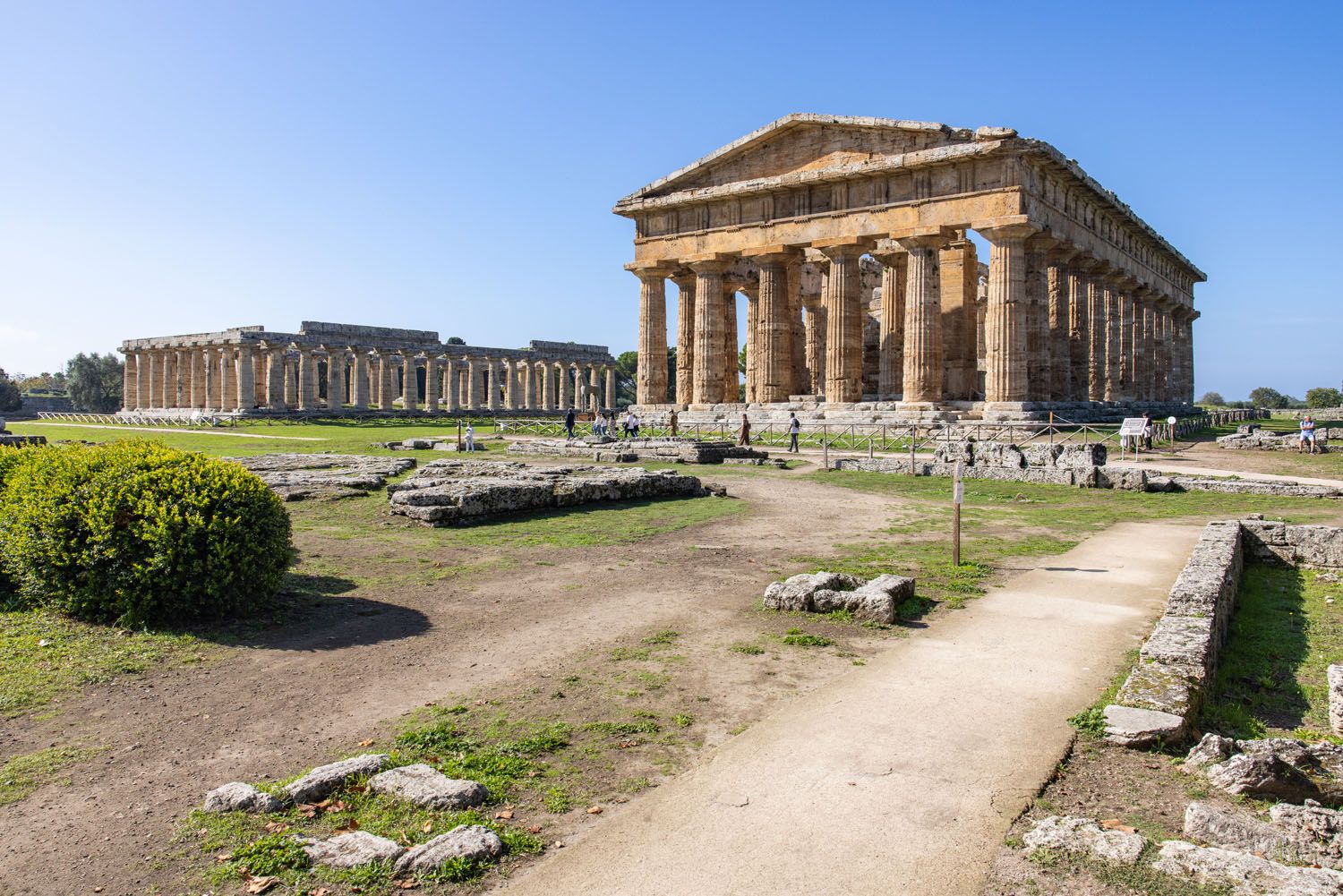
Your first view of Paestum from the entrance gate. The Temple of Neptune is on the right and the Temple of Hera is to the left.
How to Visit Paestum
How to Get to Paestum
Paestum is located in Campania, about 40 km south of Salerno.
By Train
The closest train station is the Paestum station on the Naples-Reggio Calabria line. This station sits just to the east of the archaeological site and it is a 10 minute walk to get to the main entrance. Check timetables here.
By Bus
There are several buses that connect Paestum with Salerno and Naples: SITA, CSTP, and Giuliano Bus.
By Car
By car, you can get to Paestum by taking A3 and exiting at Battipaglia onto SS18 and then follow signs to Paestum. We drove to Paestum and parked at “Parking da Matteo Zona Archeologica,” at the intersection of Via Magna Graecia and Via Porta Giustizia. From this parking lot, it is a 5-minute walk to the main entrance.
Entrance Fee and Hours
Entrance Fee: €15 March through November; €10 December through February
Hours of Operation: 9:00 am to 7:00 pm April through October, reduced hours in the winter
Tickets can be purchased online in advance or at the entrance gate. The entrance fee includes the archaeological site, the museum, and the Archaeological Park of Elea-Velia.
Get updated hours and pricing on the official website.
Guided Tours of Paestum
You have the option to tour Paestum with an archaeologist. A guided tour typically takes 2 hours.
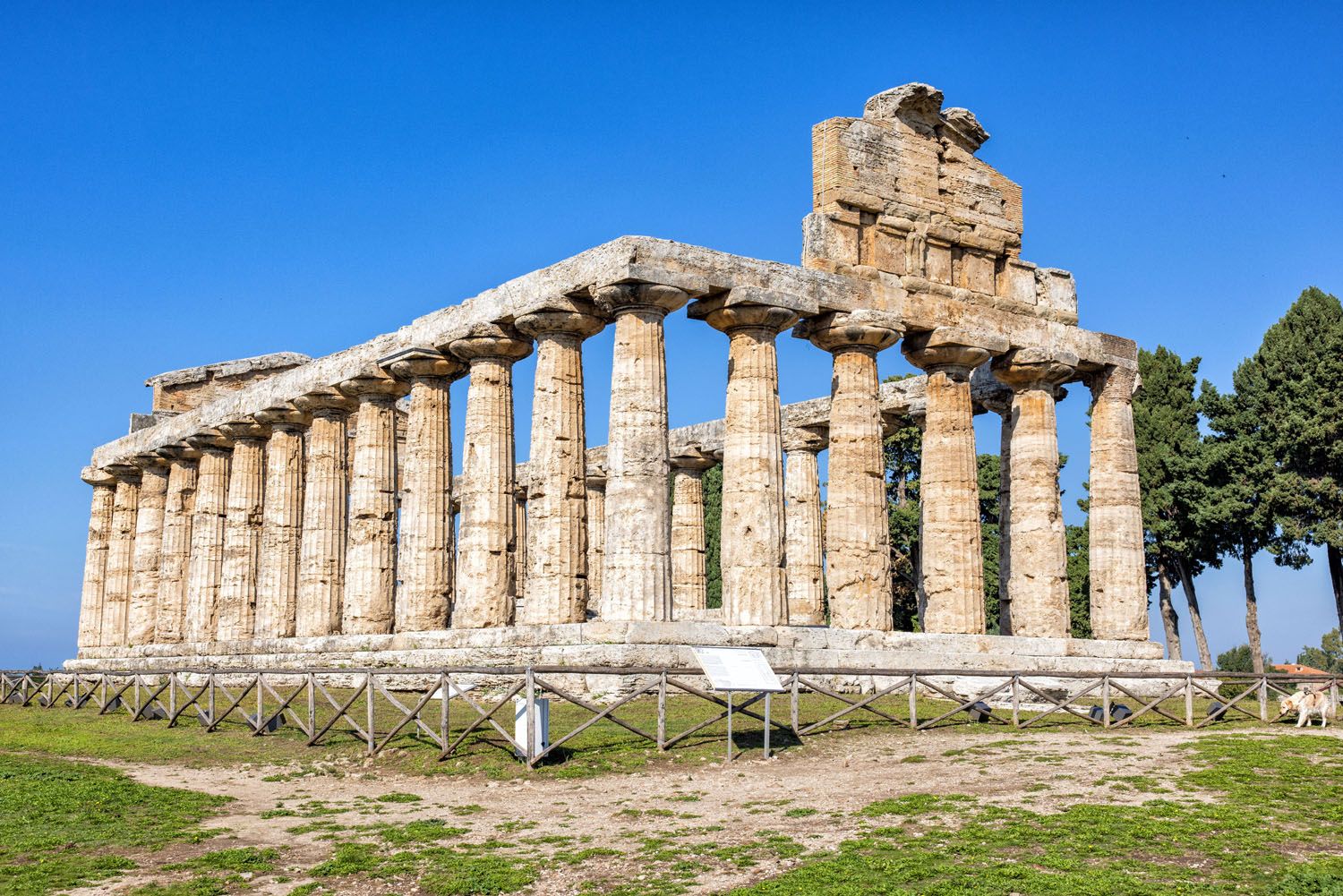
Temple of Athena
Things to See at Paestum
Views of Temples of Paestum
SP276 is a pedestrian road that runs along the east side of the Paestum archaeological park. This road is free to visit and offers great views of the three temples.
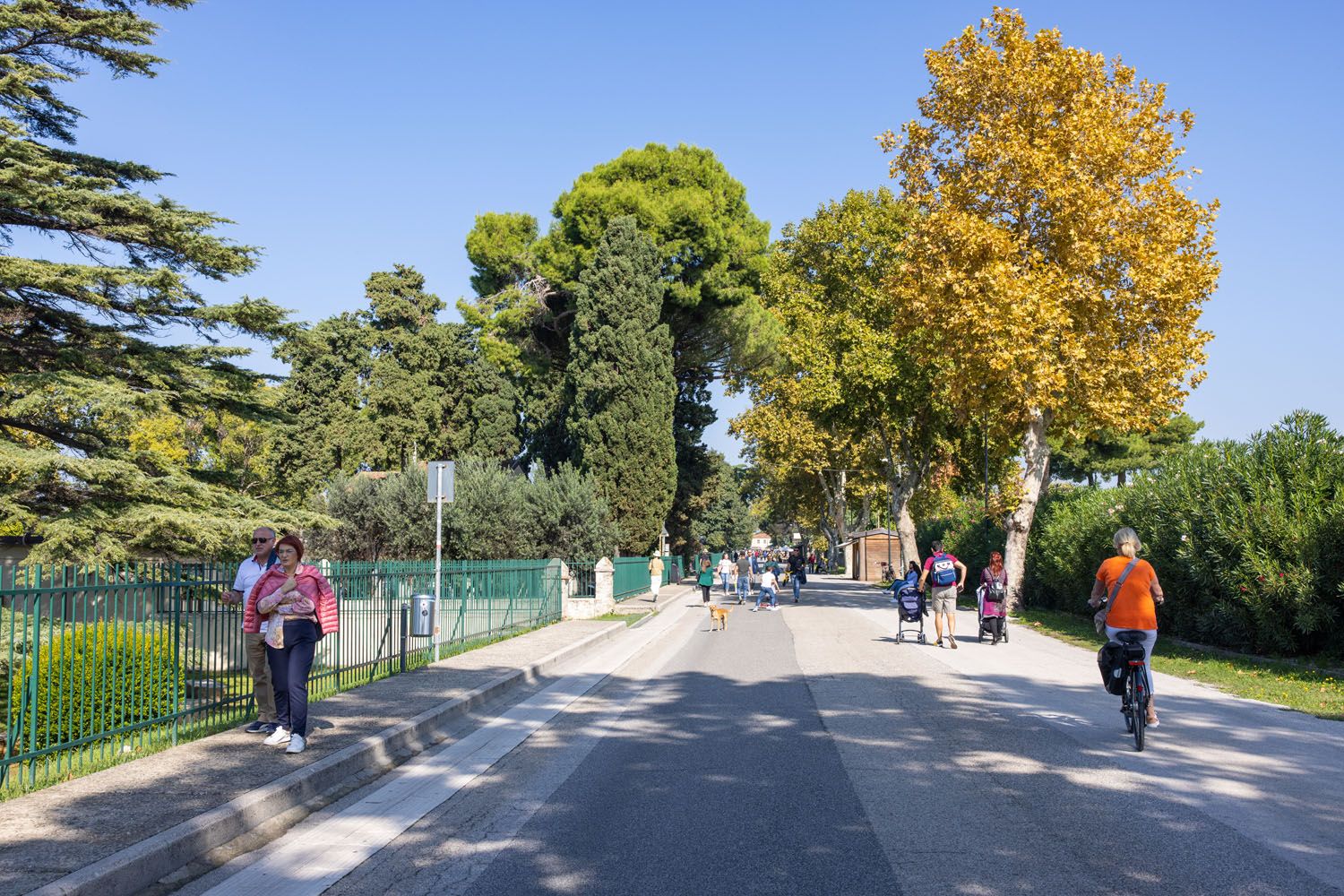
The pedestrian street that runs along Paestum
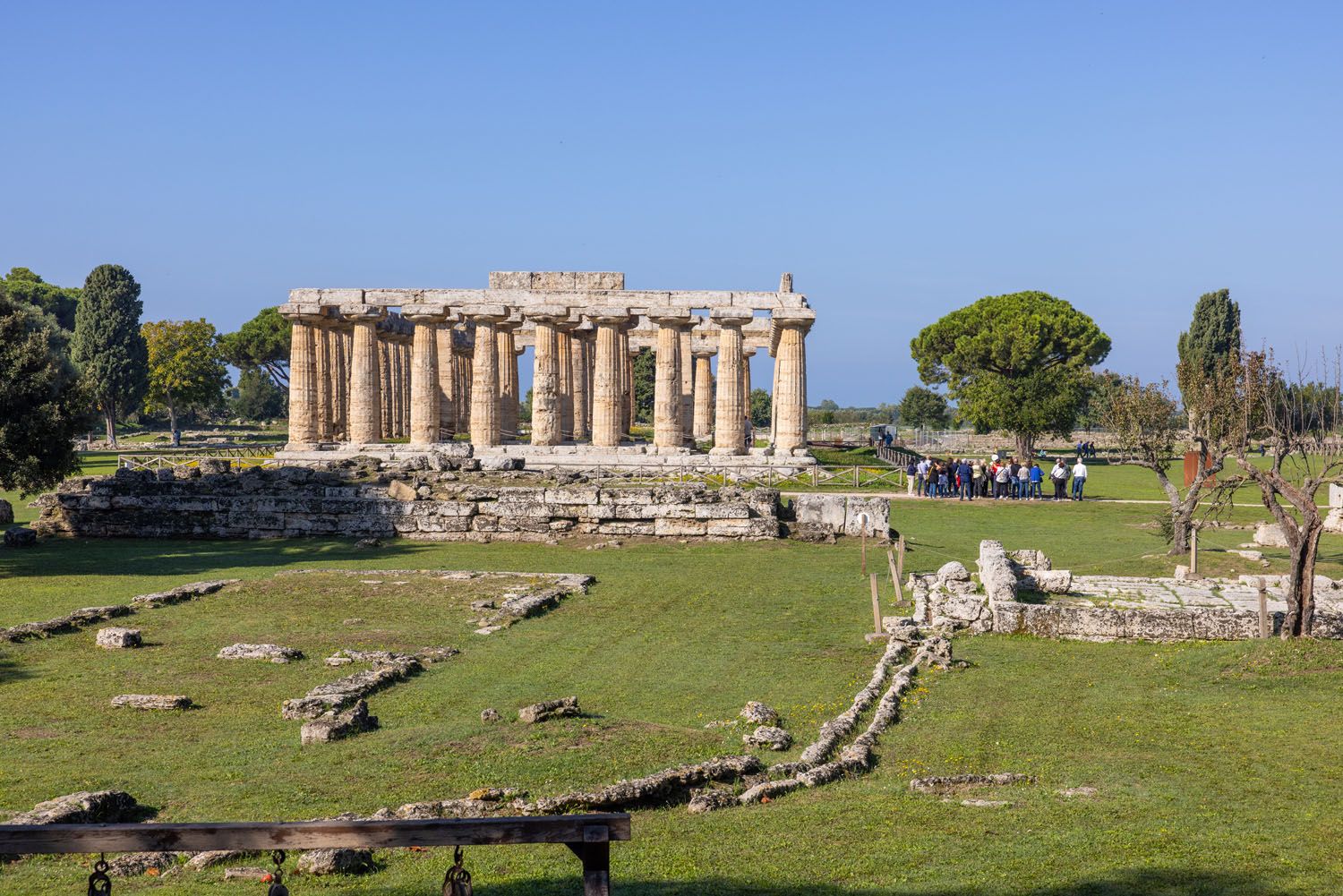
The view of Paestum from the pedestrian road.
If you want to see the three temples of Paestum and don’t want to pay the entrance fee, walk along this road and you will easily be able to see the Temple of Poseidon, the Temple of Hera, and the Temple of Athena.
Halfway along SP276 is the entrance to the archaeological park and the entrance into the museum. There are also several restaurants and souvenir shops on this road, making it the most convenient place to get some food or drink.
PRO TRAVEL TIP: If you aren’t taking a guided tour of Paestum, consider purchasing one of the guidebooks that are for sale at the ticket booth. We bought a copy of Paestum, The City of Three Temples, a Vision Roma book by Emanuele Greco. This detailed guide has drawings of the temples and structures with overlays of what they originally looked like after construction. It also has a map labeling all of the sites in the park.
Temple of Neptune (Poseidon)
Once you enter the park, your first view is of the Temple of Neptune, also called the Temple of Poseidon. This is the youngest and grandest temple in Paestum. It was constructed in 450 BC and it is considered to be the most perfect example of Doric architecture in Italy and Greece.
In the 18th century, scholars thought this temple was built to honor the god Neptune/Poseidon, but more recent studies now state that it may have been built to honor Apollo.
You are permitted to enter the temple. Only a small number of people are allowed to enter at a time, so you may have to wait in line for a few minutes.
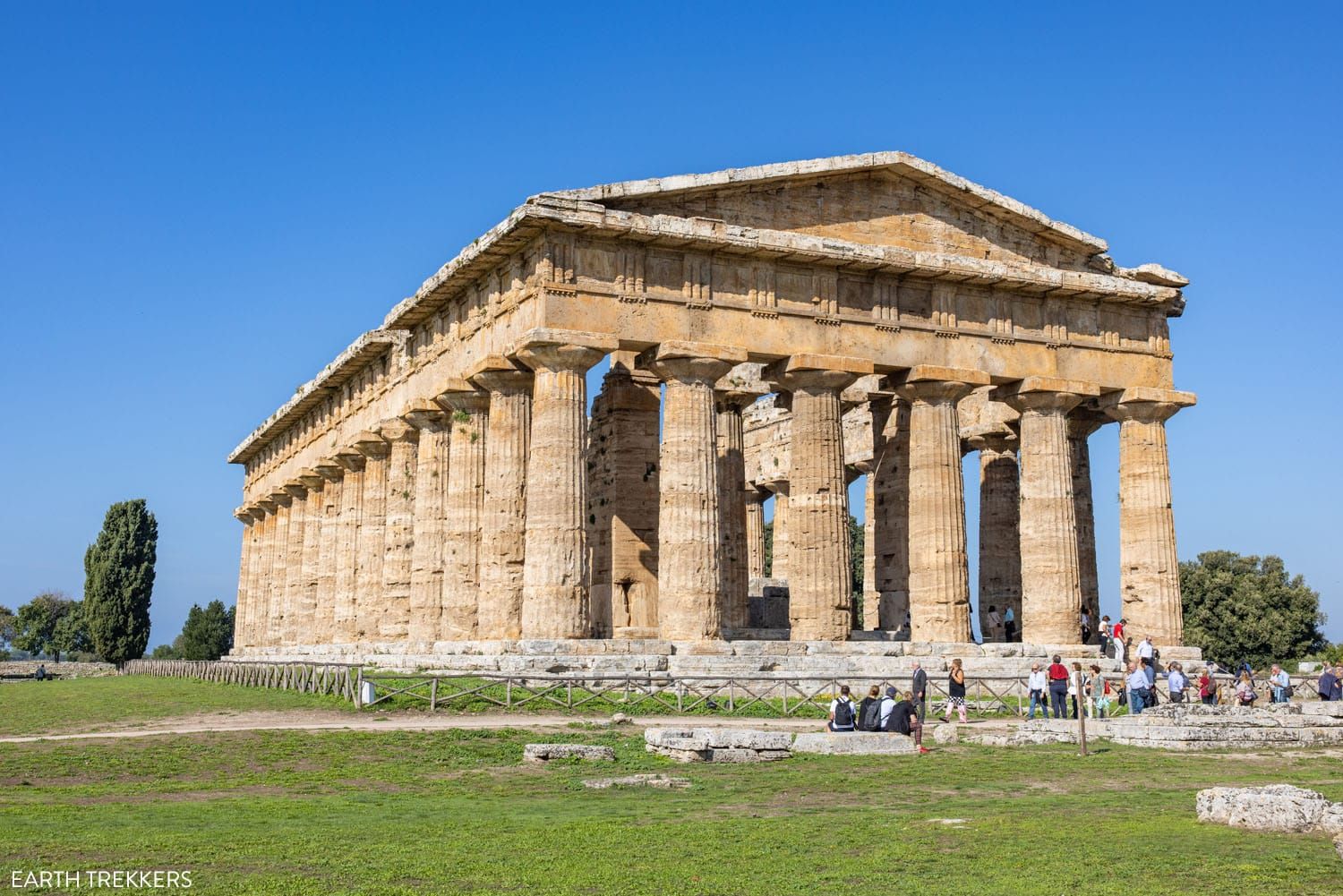
Temple of Neptune
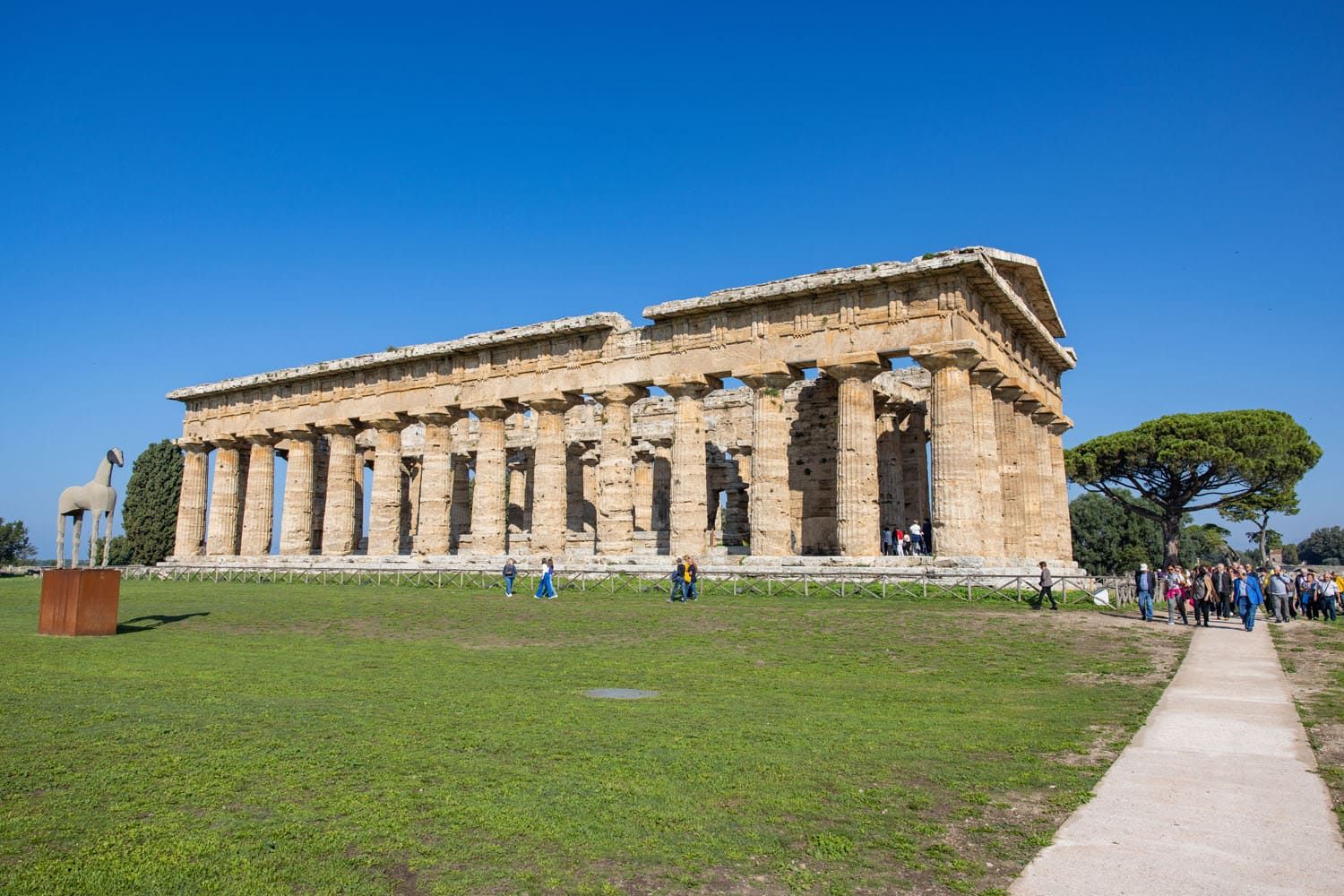
Another view of the Temple of Neptune
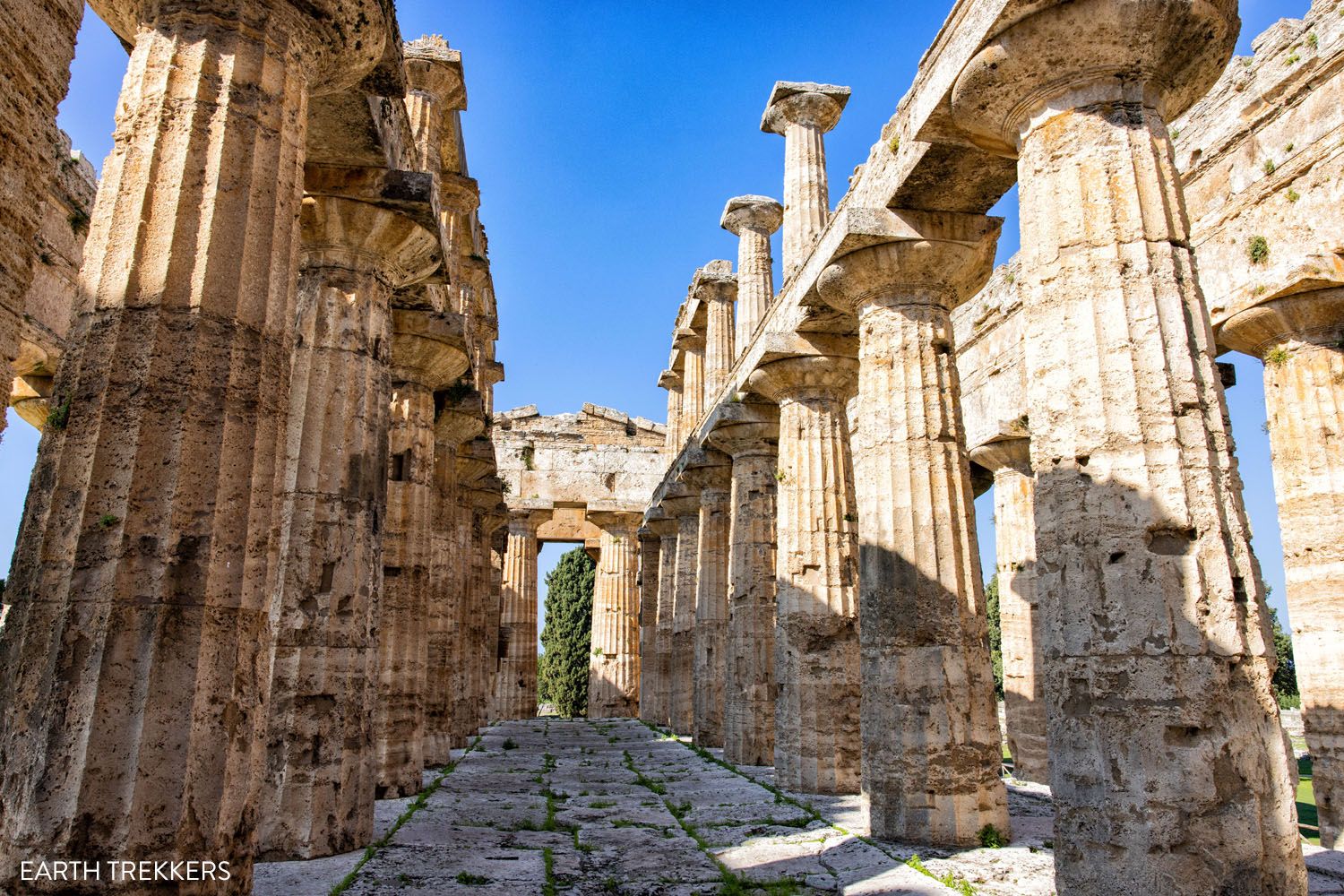
Inside the Temple of Neptune
The Temple of Hera
The Temple of Hera, also known as Basilica, sits just to the left of the Temple of Neptune. This temple is smaller than the Temple of Neptune, another fine example of Doric architecture, and was built in the middle of the 6th century BC. This is another temple that you can enter.
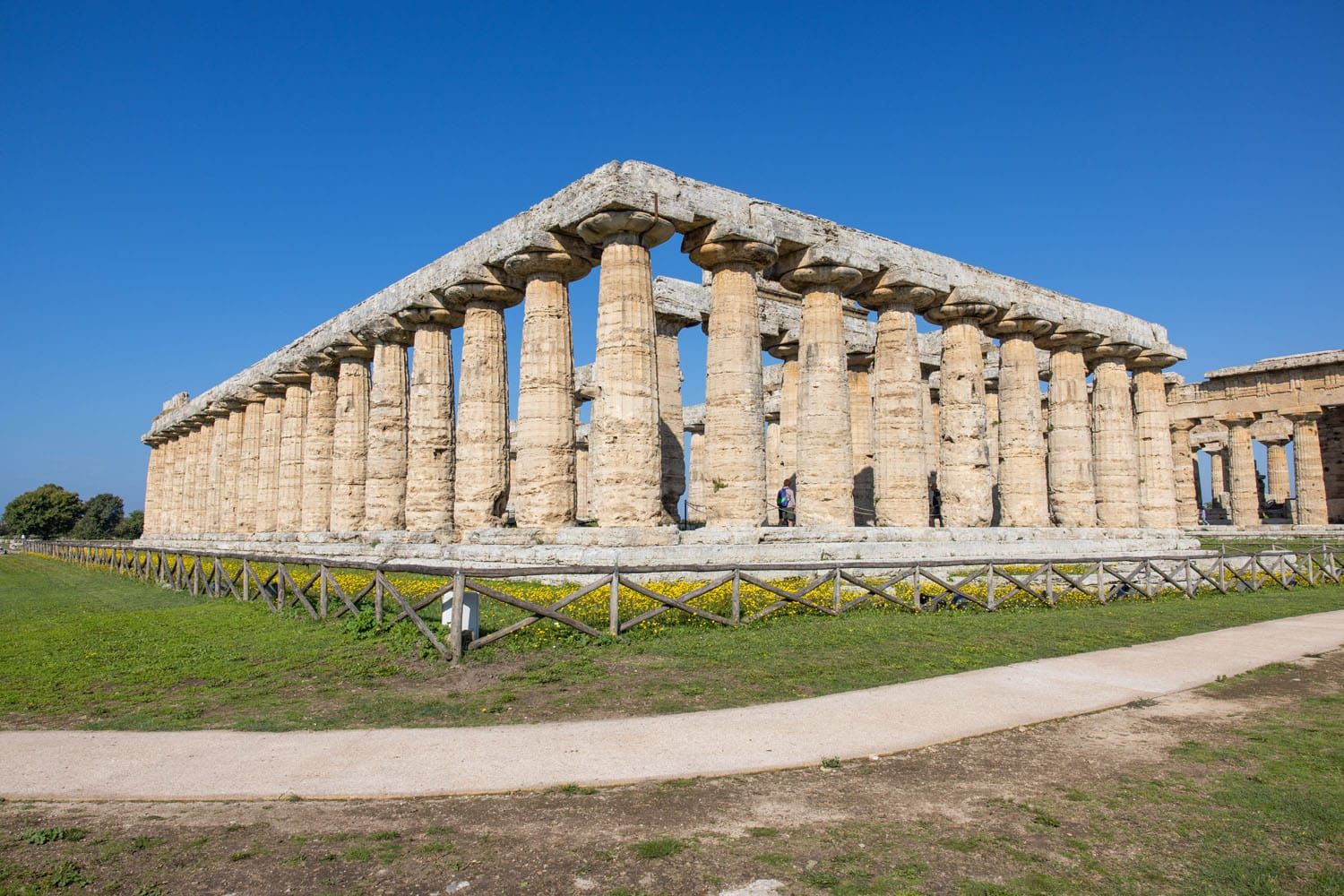
Temple of Hera
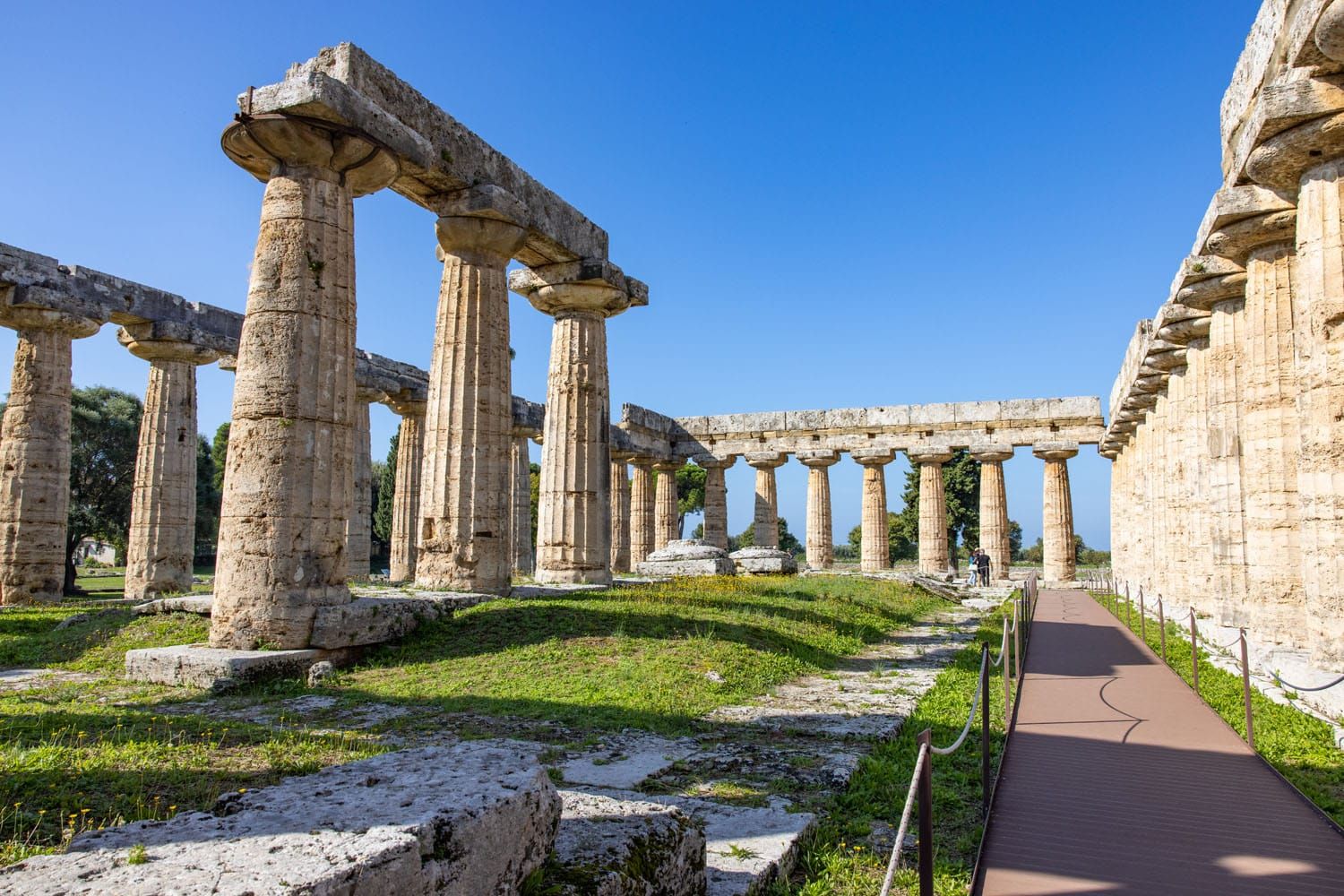
Inside the Temple of Hera
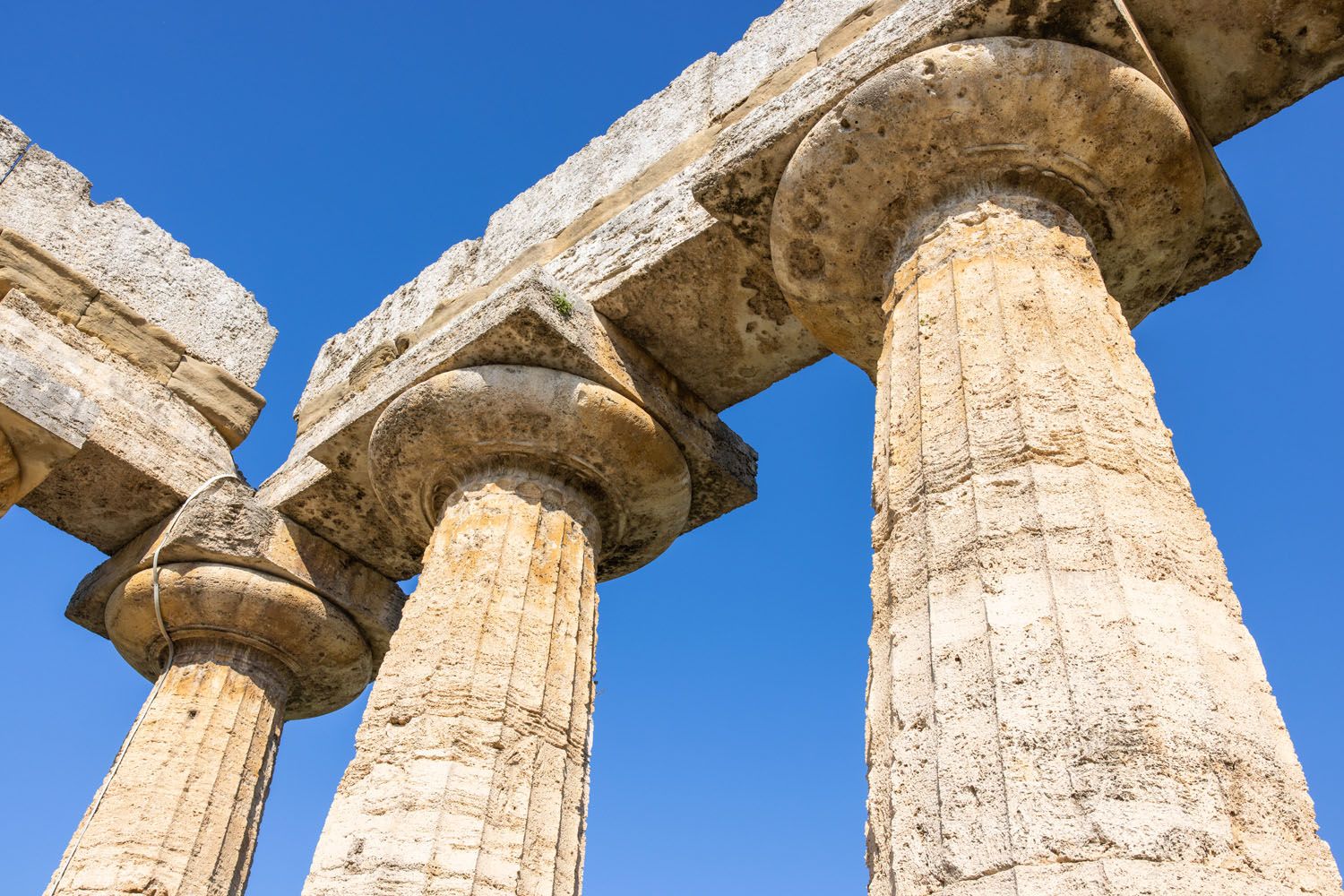
Columns in the Temple of Hera
Roman Forum
After visiting the Temple of Neptune and Temple of Hera, head north to the Roman Forum. This was added once the town became a Roman city. The forum was surrounded by shops and civic buildings and you can still see some of the remaining foundations.
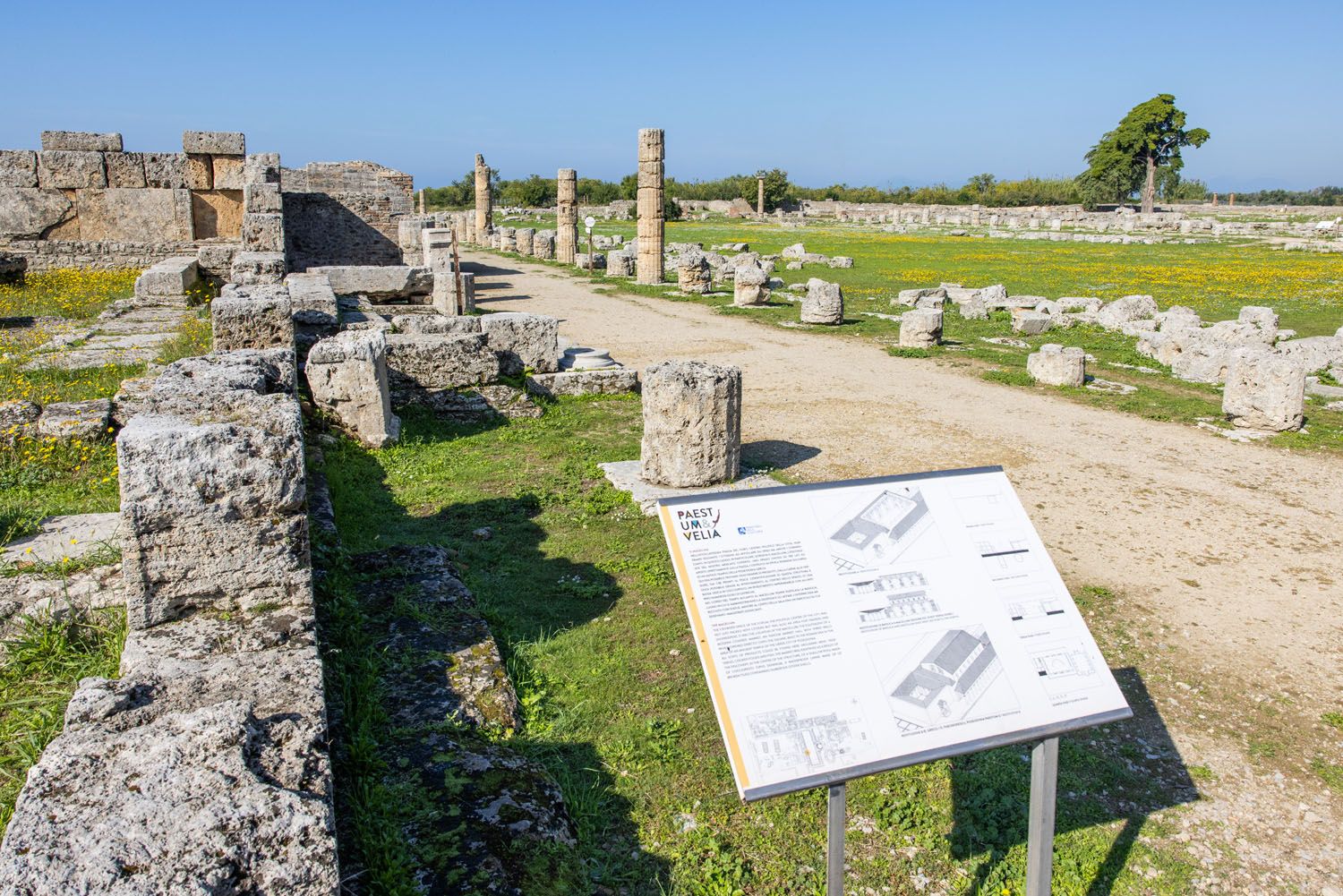
Roman Forum
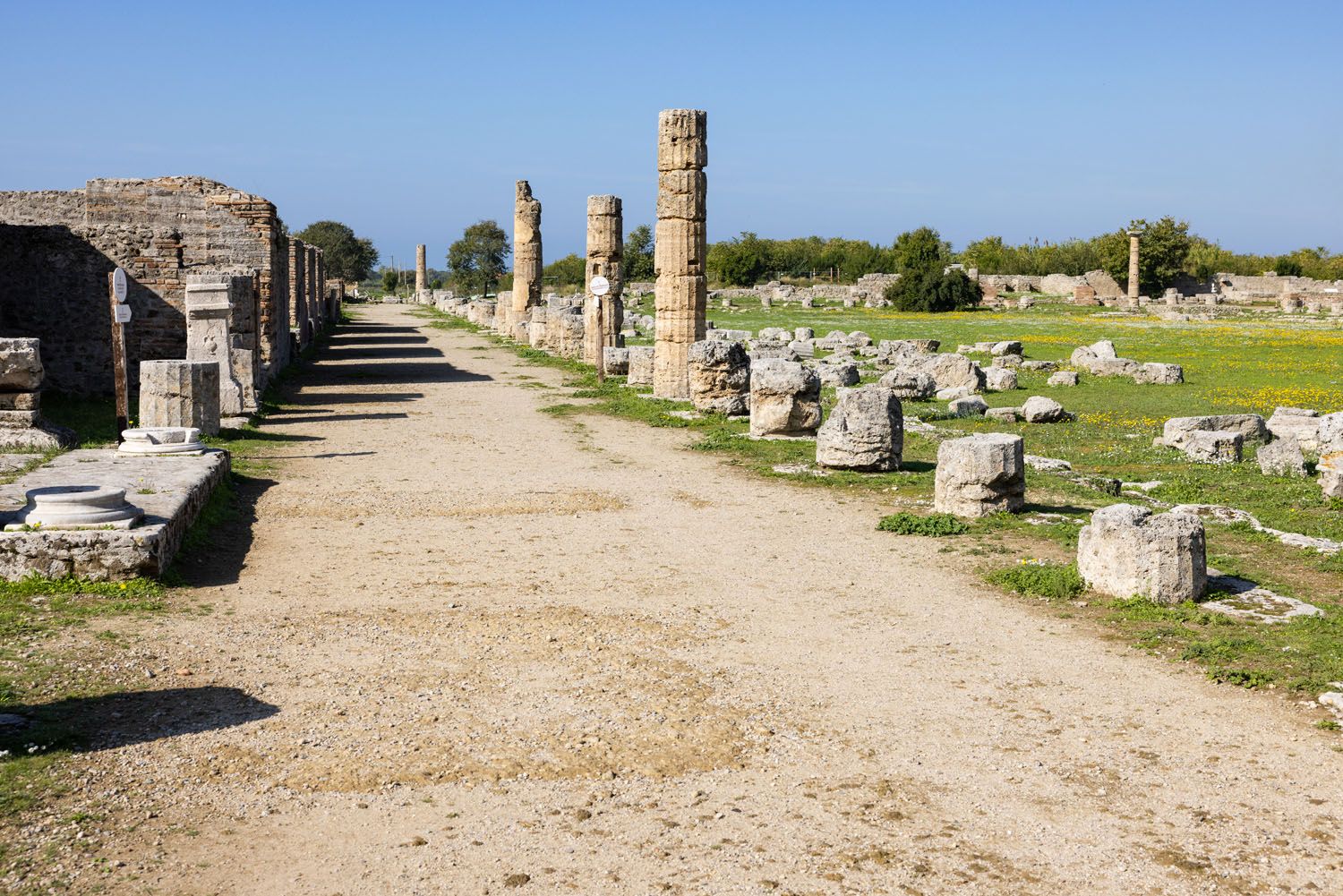
Roman Forum
The Amphitheater
The Amphitheater dates back to 50 BC but over the centuries it was gradually enlarged. Now, only a portion of it can be seen. About half of the Amphitheater is unexcavated and sits underneath the modern pedestrian road, just outside of the fence line.
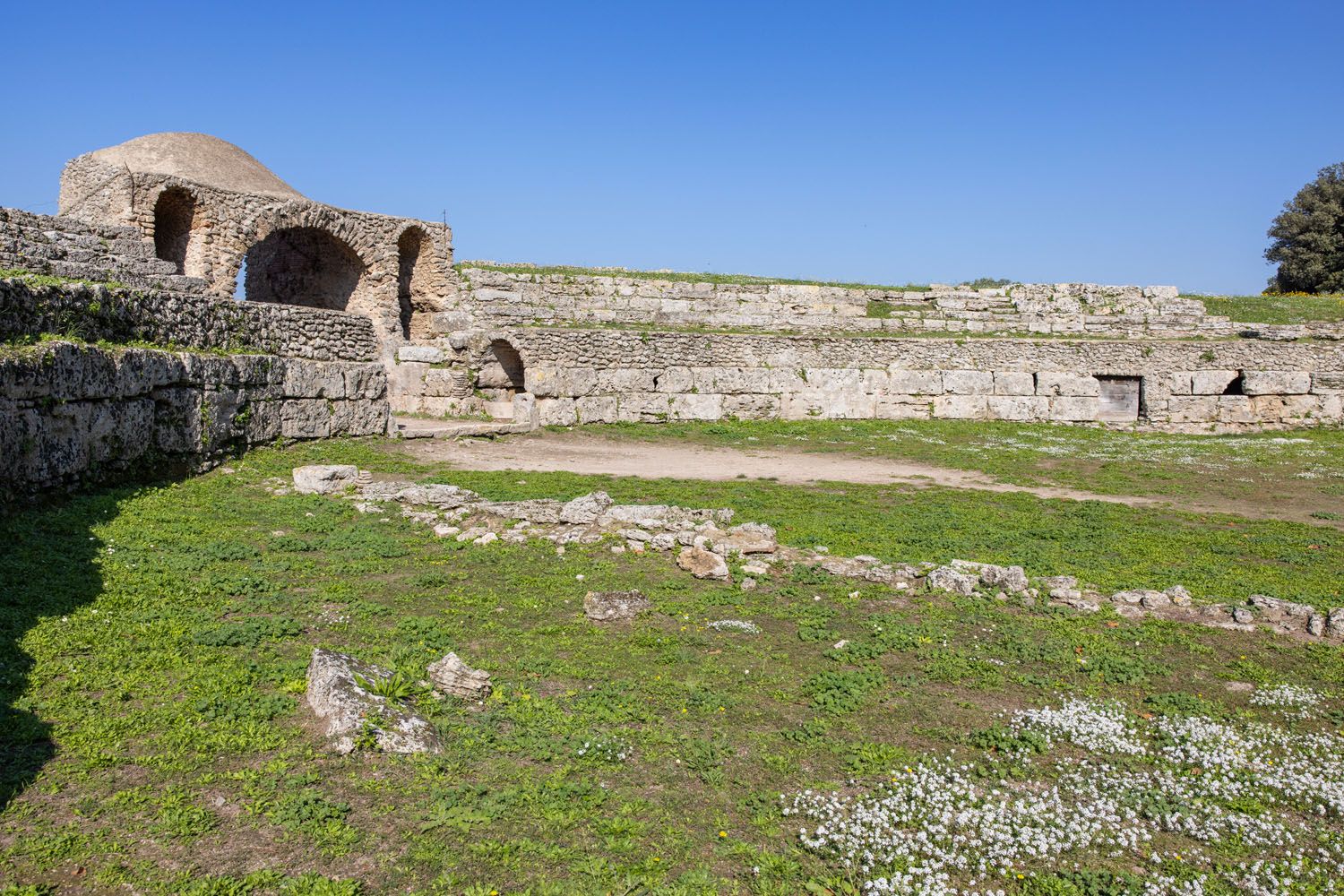
The Amphitheater
The Ekklesiasterion
This was an important building in Poseidonia’s agora. The ekklesiasterion was the building where meetings were held by the male citizens in town who participated in the city politics.
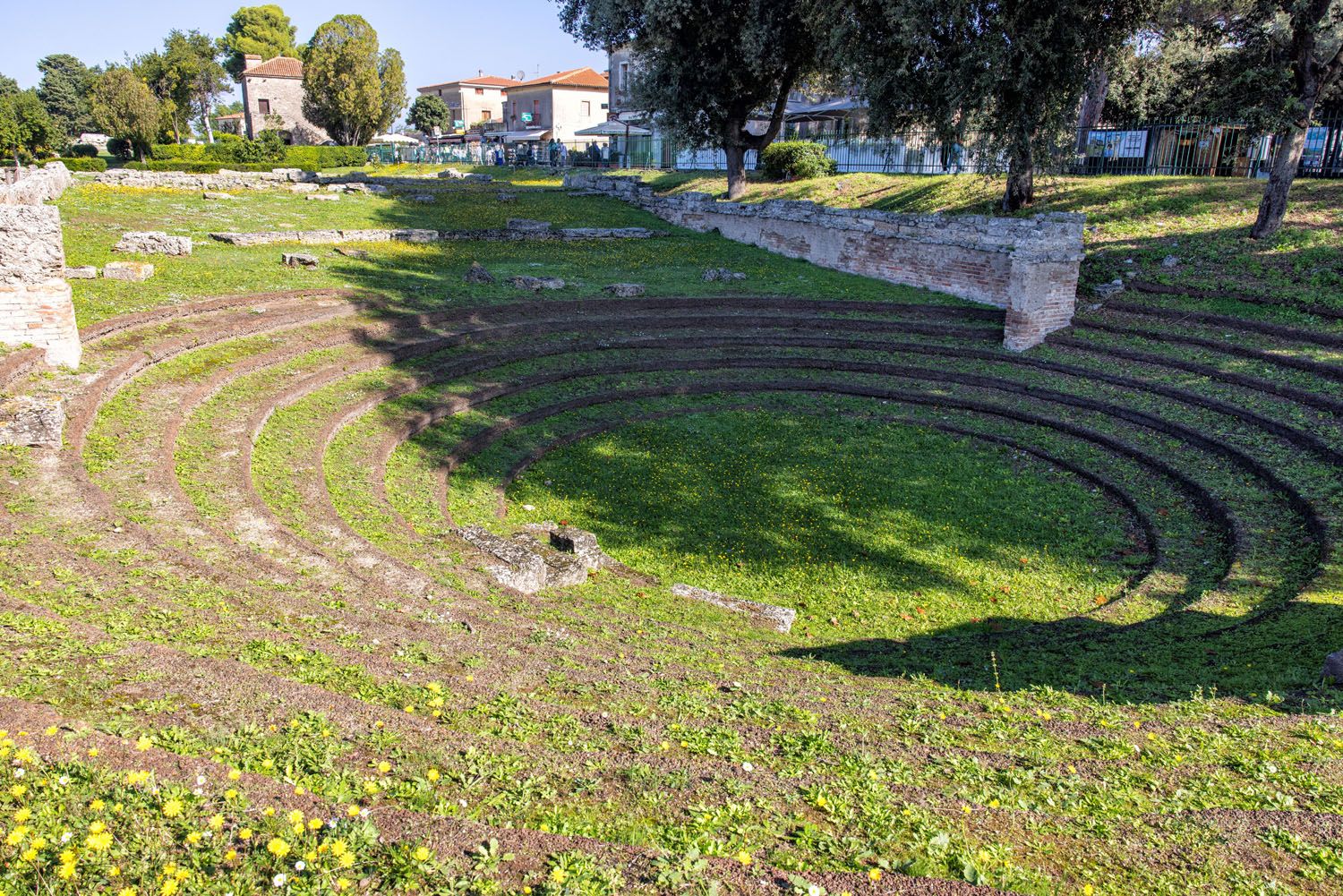
The Ekklesiasterion
Temple of Athena (Ceres)
The Temple of Athena, also known as the Temple of Ceres, sits on the far north end of the archaeological park. This temple was built in 500 BC, in between the construction of the Temple of Hera and the Temple of Neptune.
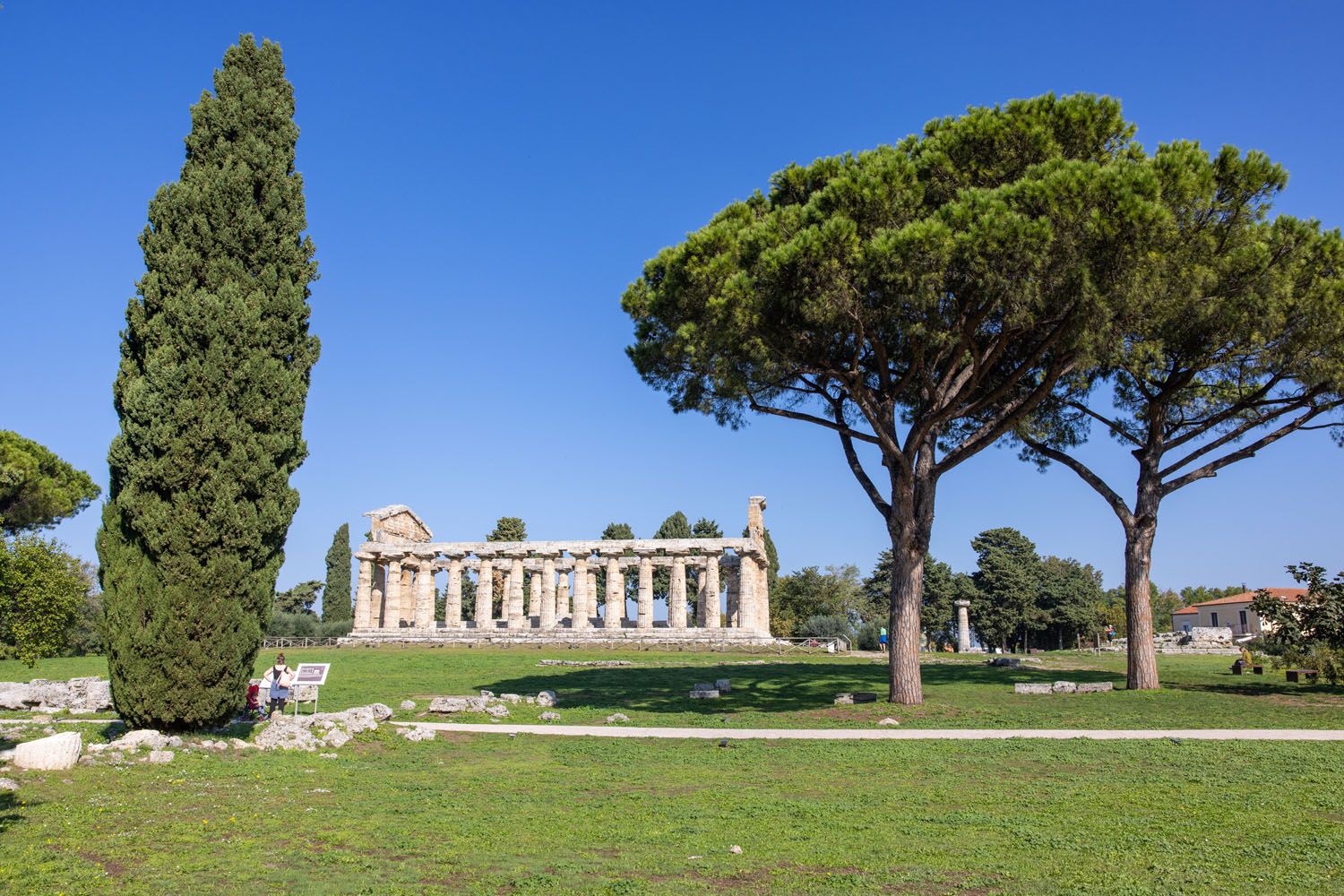
Temple of Athena
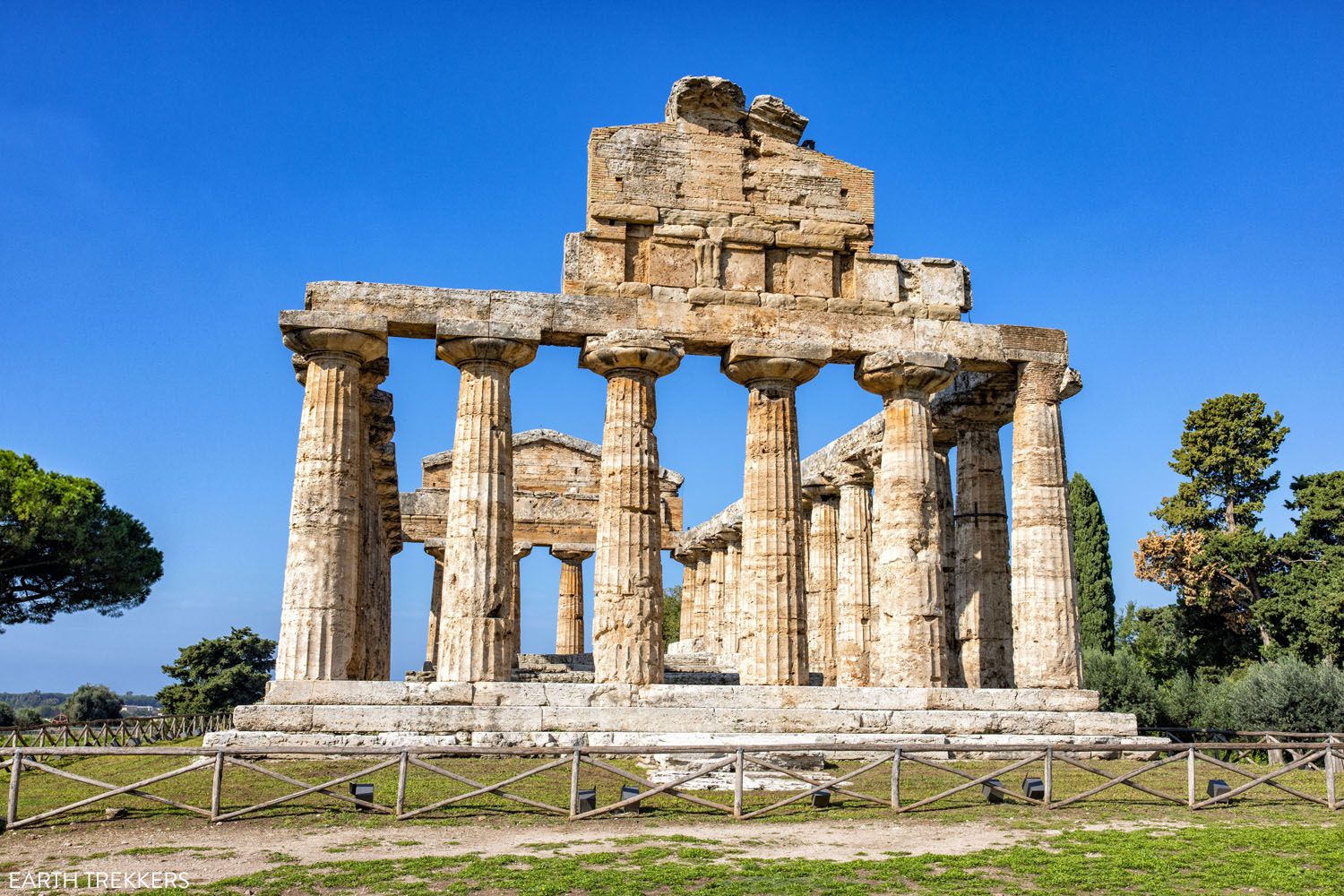
Temple of Athena
Houses of Paestum
There are several houses that still retain some unique features. Near the Roman Forum is a house that still has its original marble floor. There is also a house that has its original mosaic floor and house that has a pool. These are all labeled on the map of the Paestum, The City of Three Temples book mentioned earlier.
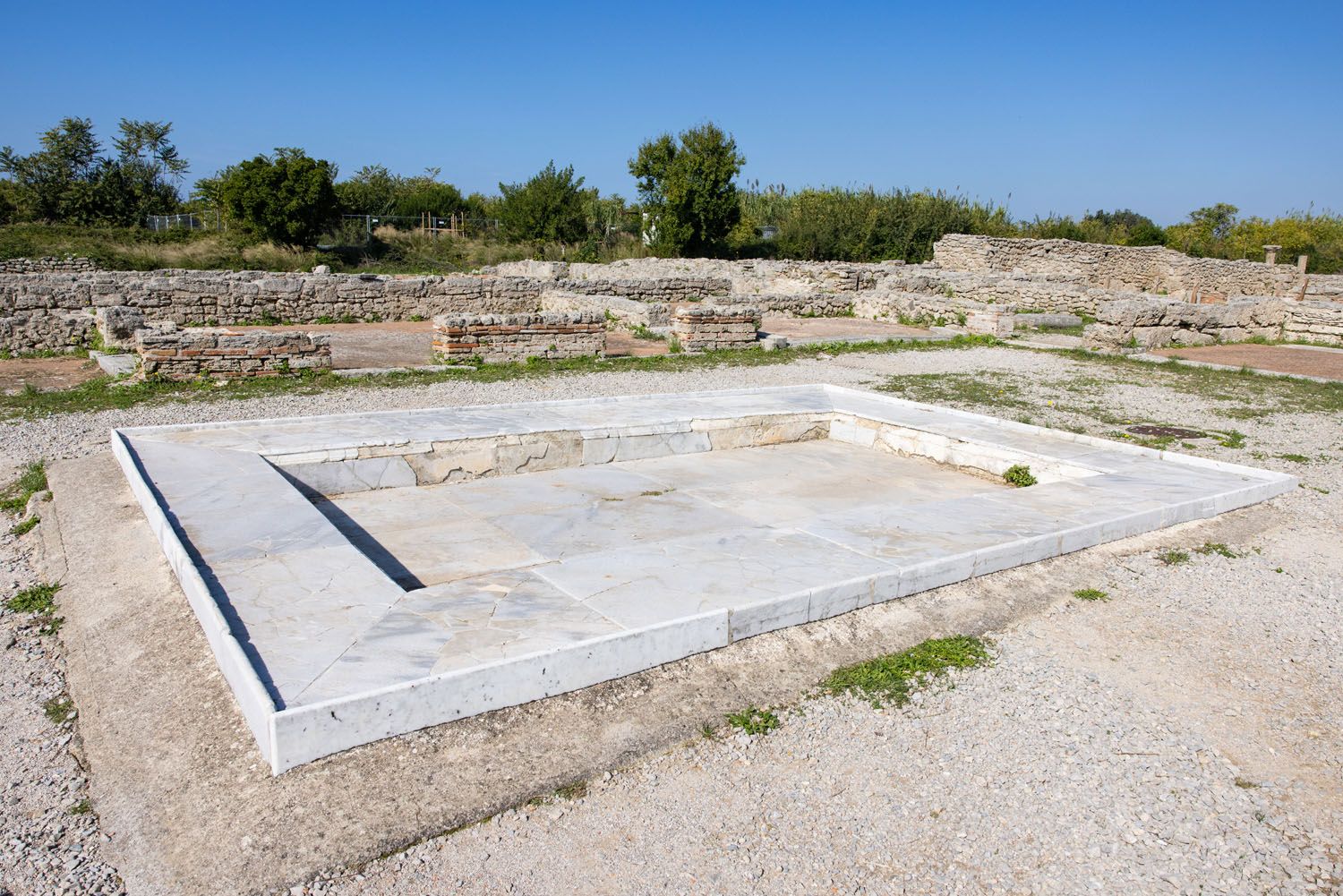
Marble floor in one of the houses
The Pool
The pool was constructed in the 3rd century BC and it is one of the largest known examples of this structure. The pool and the surrounding structures are part of the gymnasium, which was used both for gymnastic competitions and for worship of the female goddess of fertility.
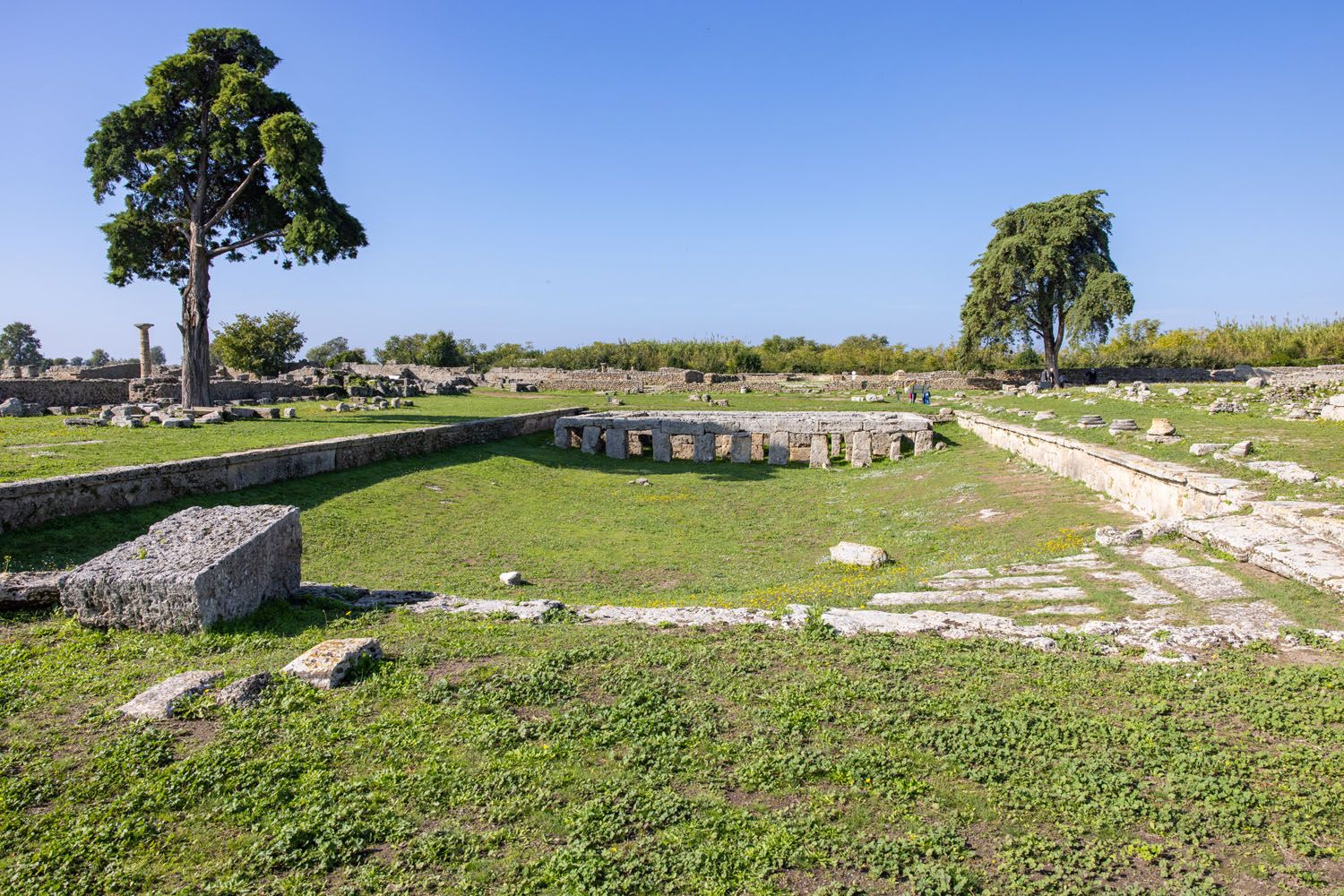
The Pool
The Museum
Located just outside of the archaeological park is the National Archaeological Museum of Paestum. In this museum, you can see the Tomb of the Diver (painted slabs of a man diving into the water, symbolizing the transition from life to death), exhibits about the history and reconstruction of the sites within the park, and funerary paintings from tombs from the 4th century BC.
How Much Time Do You Need at Paestum?
To walk through the archaeological site and visit the museum, plan on spending two to three hours at Paestum.
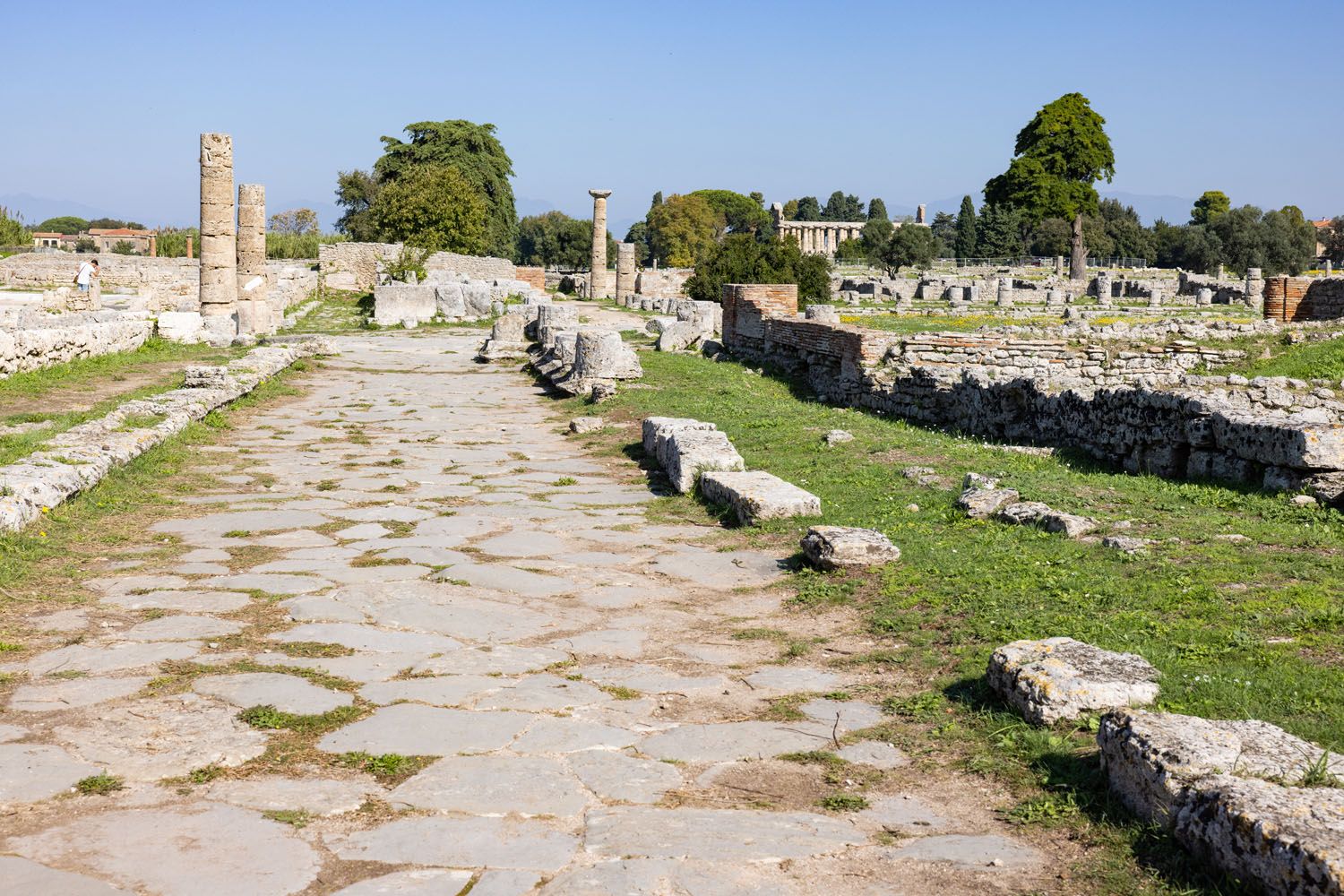
The Sacred Way (Via Sacra)
Is Paestum Worth It?
Paestum contains some of the best-preserved Greek ruins on the mainland of Italy and it is well worth it for those with an interest in archaeological and historical sites.
We really enjoyed our visit, even though we aren’t big on visiting archaeological sites. The temples are amazingly preserved and since much of the layout of the city still exists, you really get a feel for what Paestum once looked like.
If you have been to Athens and toured the archaeological sites there, such as the Ancient Agora and the Temple of Hephaestus and the Roman Agora, a visit to Paestum is very similar.
In Sicily, the Valley of the Temples is another place to see amazingly well-preserved Greek temples in Italy.
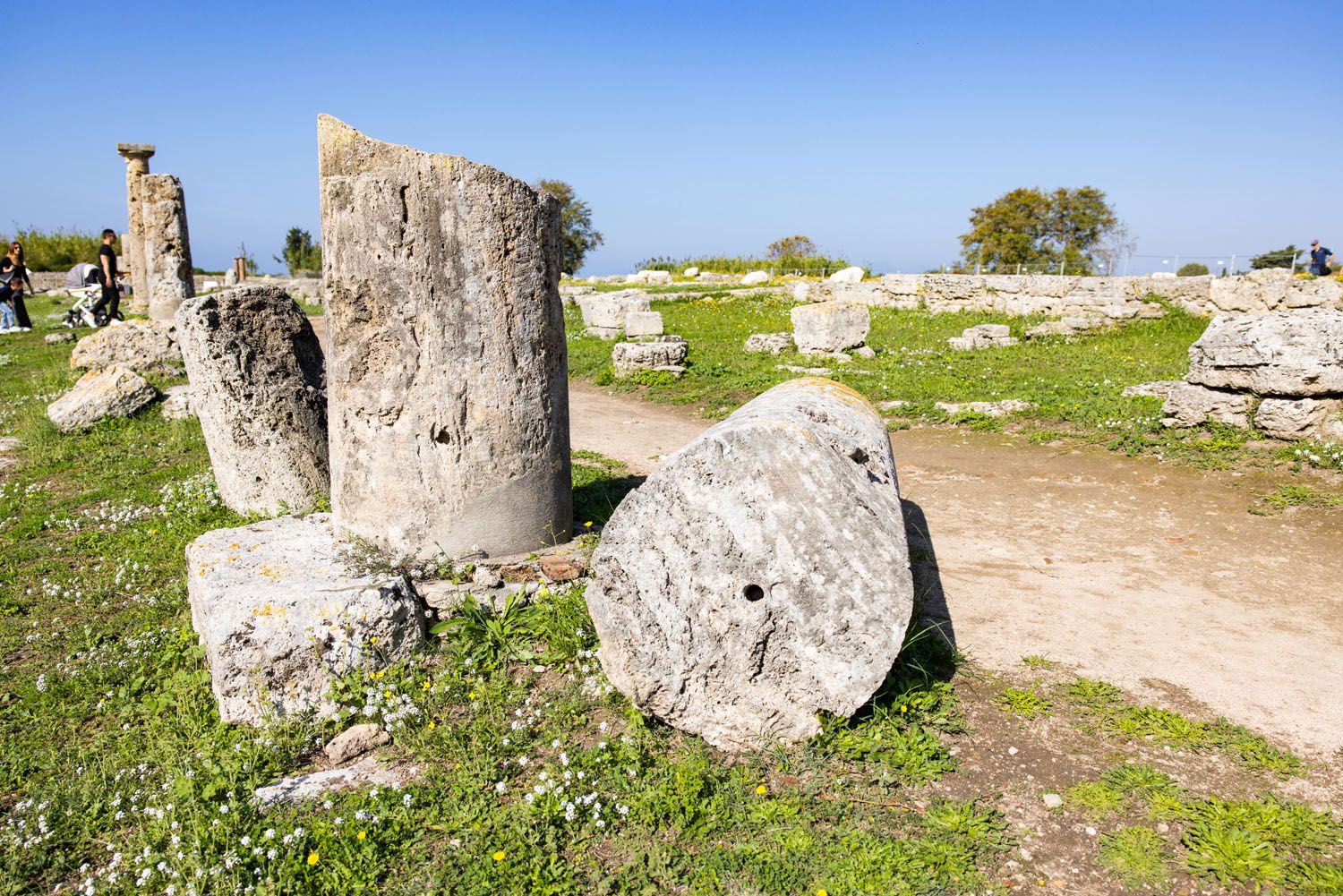
Tours of Paestum
If you prefer to take a guided tour of Paestum, you have several options. You can also visit Paestum on a guided tour from Naples and this includes a mozzarella tasting.
Tours of Paestum
If you have any questions about how to visit Paestum, let us know in the comment section below.
More Information for Your Trip to Italy
We have TONS more information about Italy in our Italy Travel Guide, including Rome, Florence, Venice, Tuscany, the Dolomites, the Amalfi Coast, the Cinque Terre, Basilicata, and Puglia.
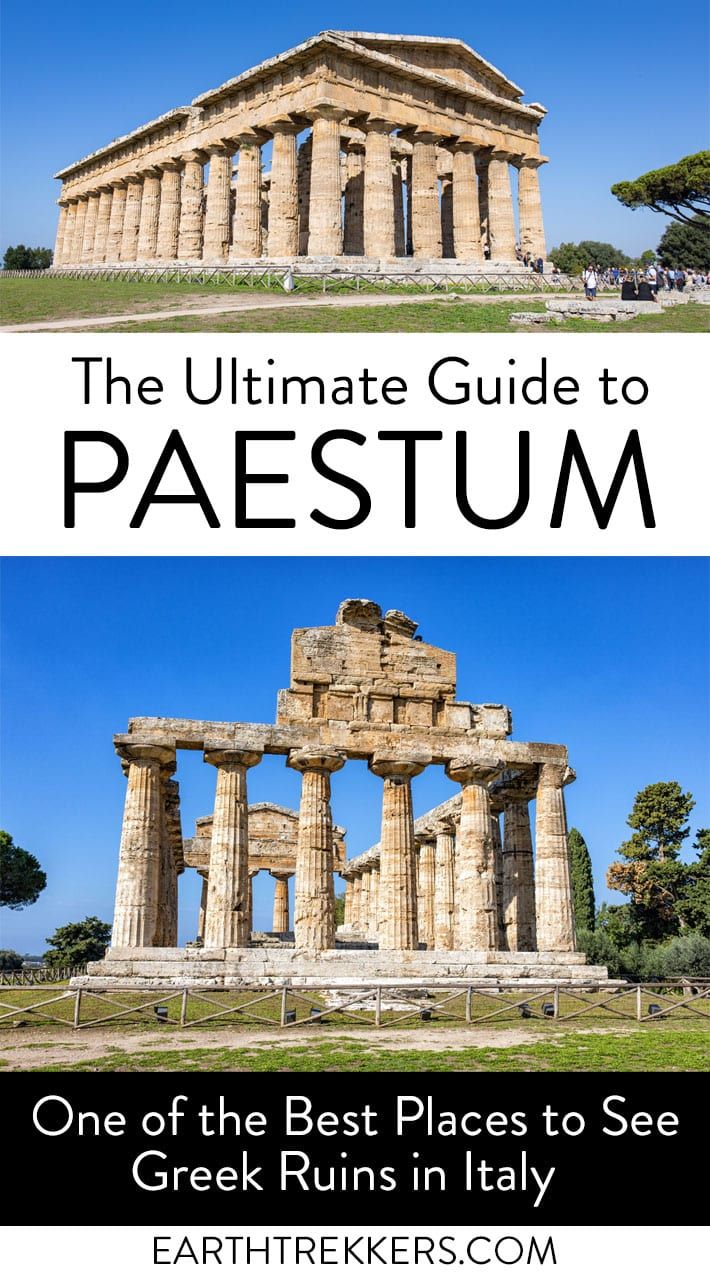
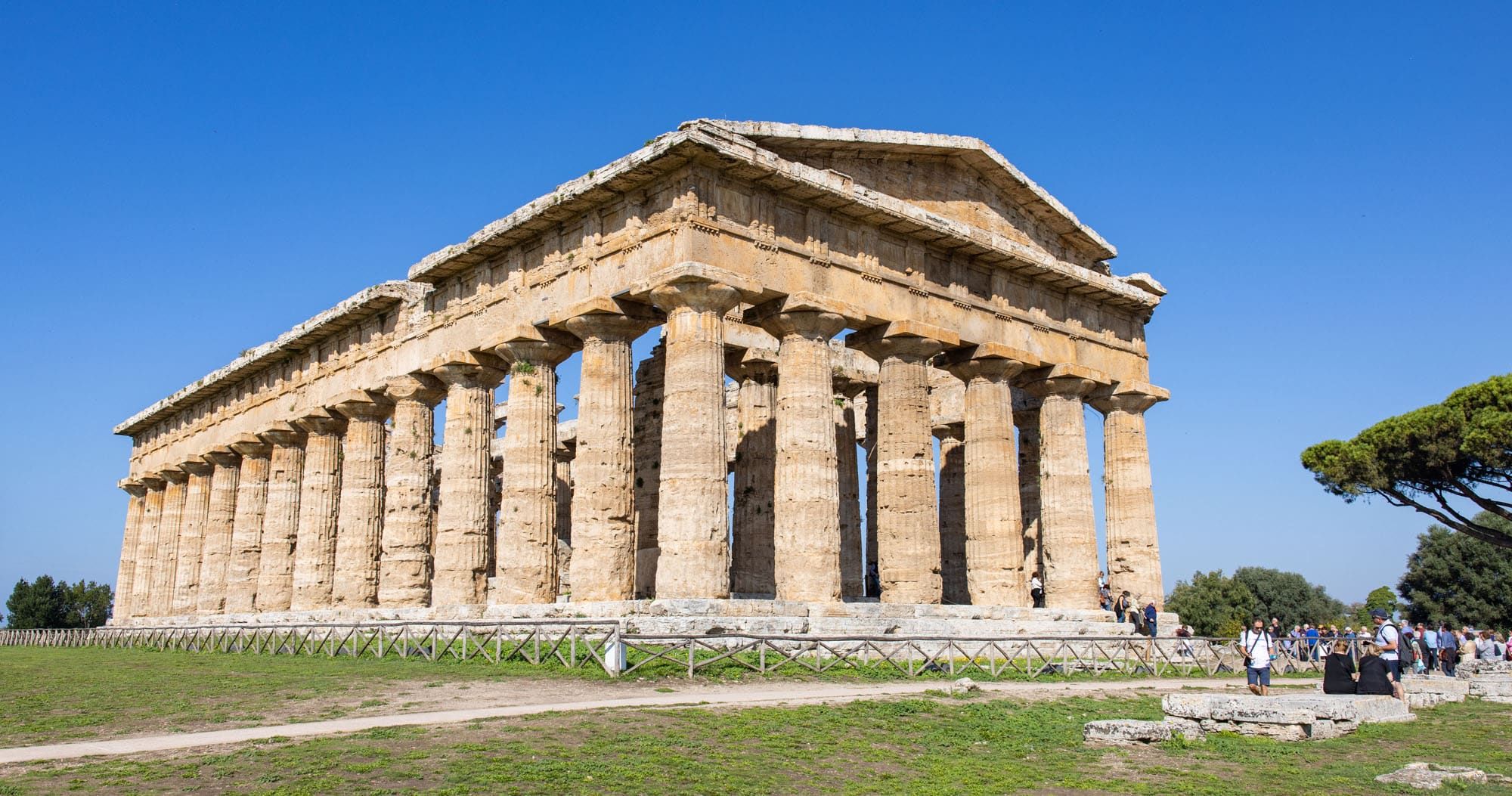
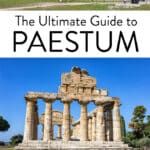


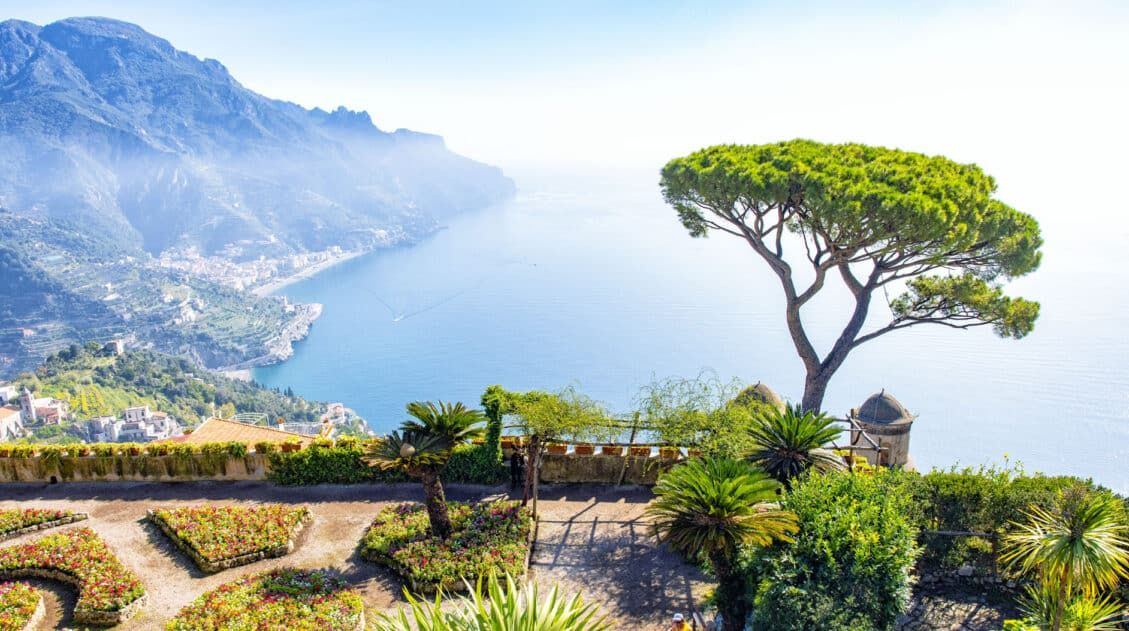
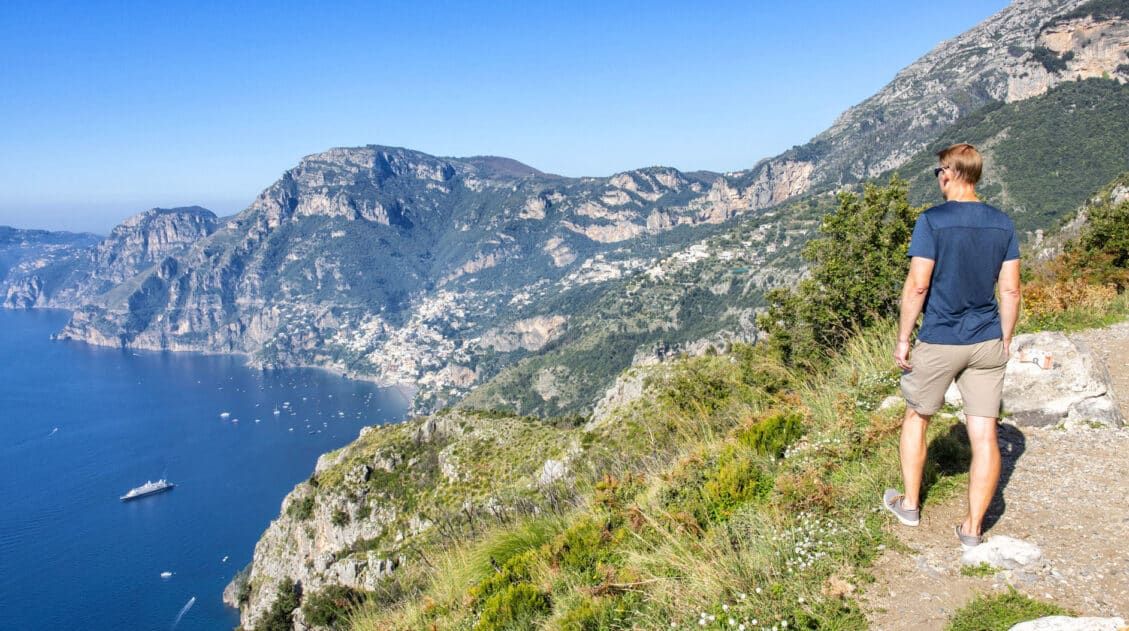
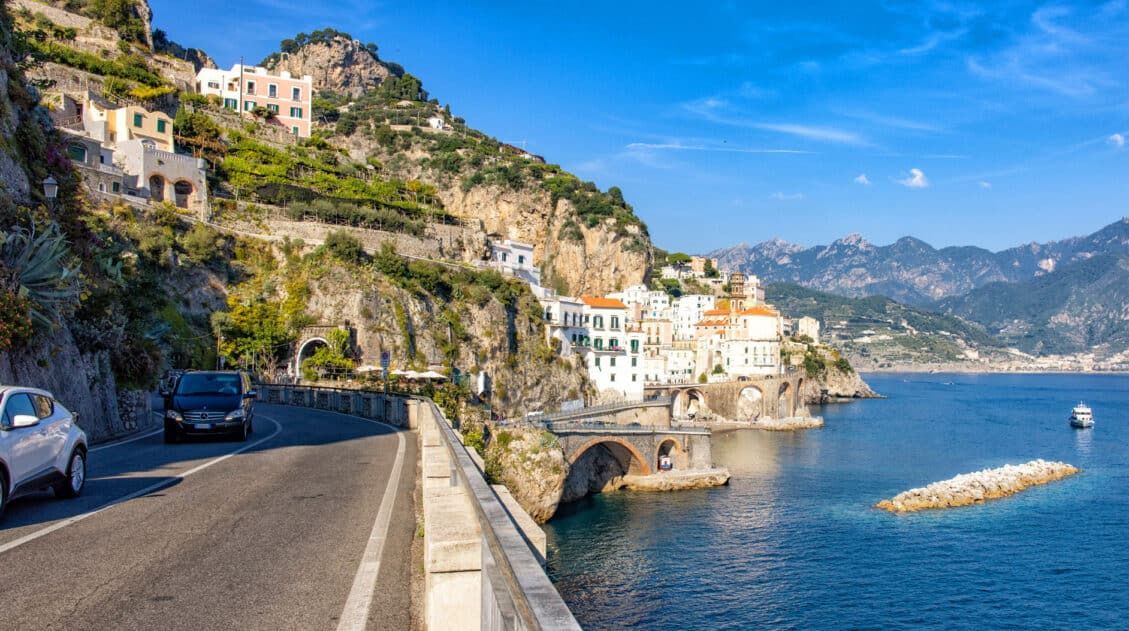

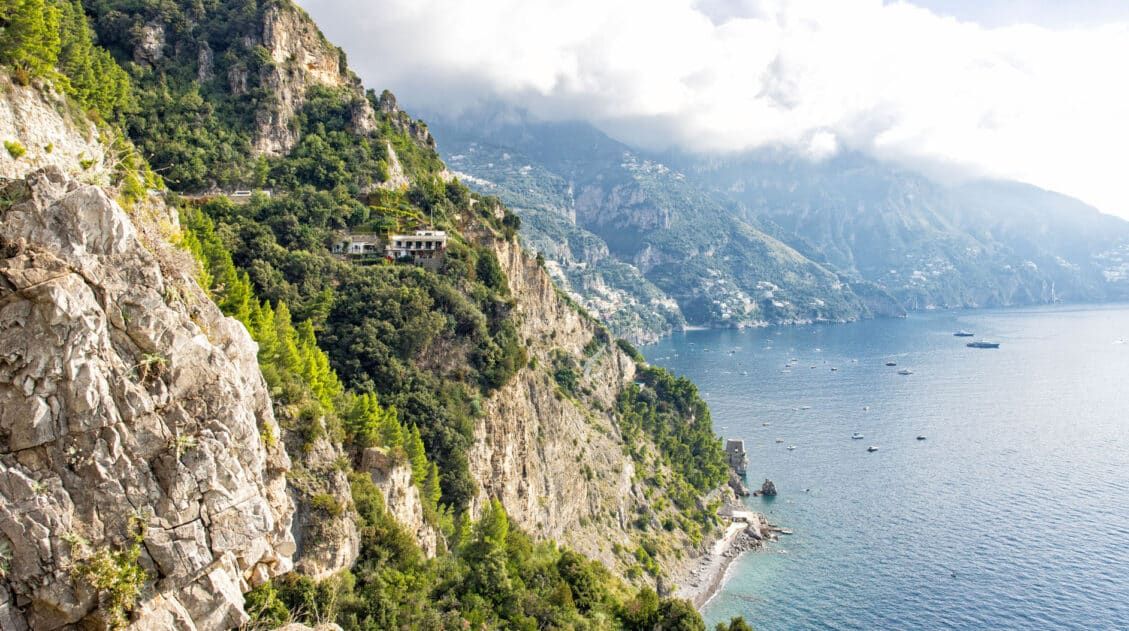

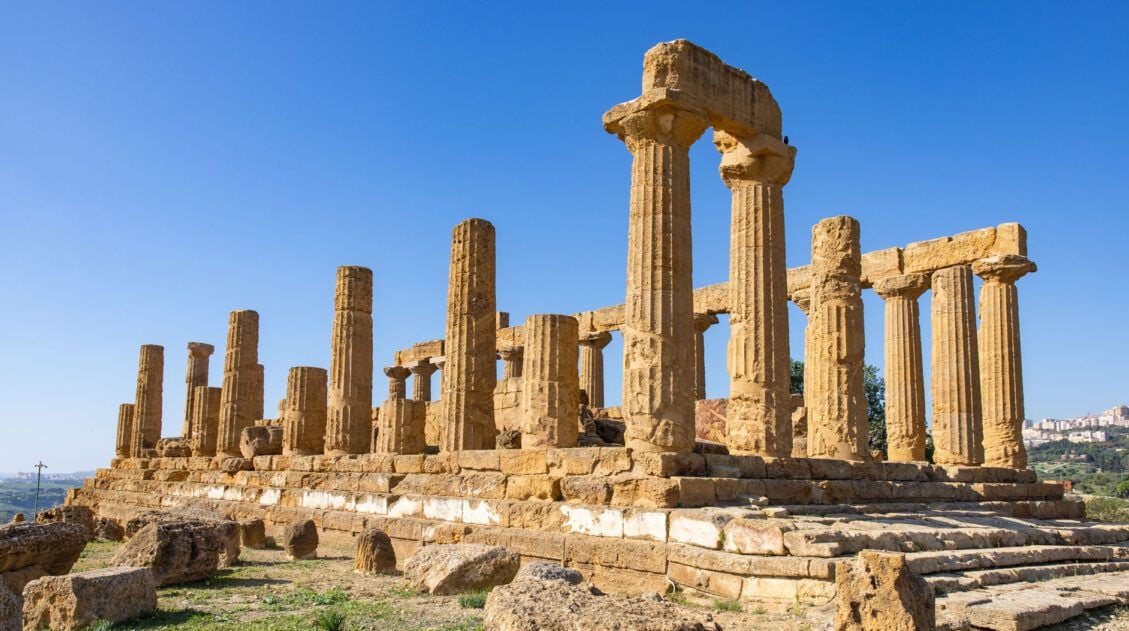
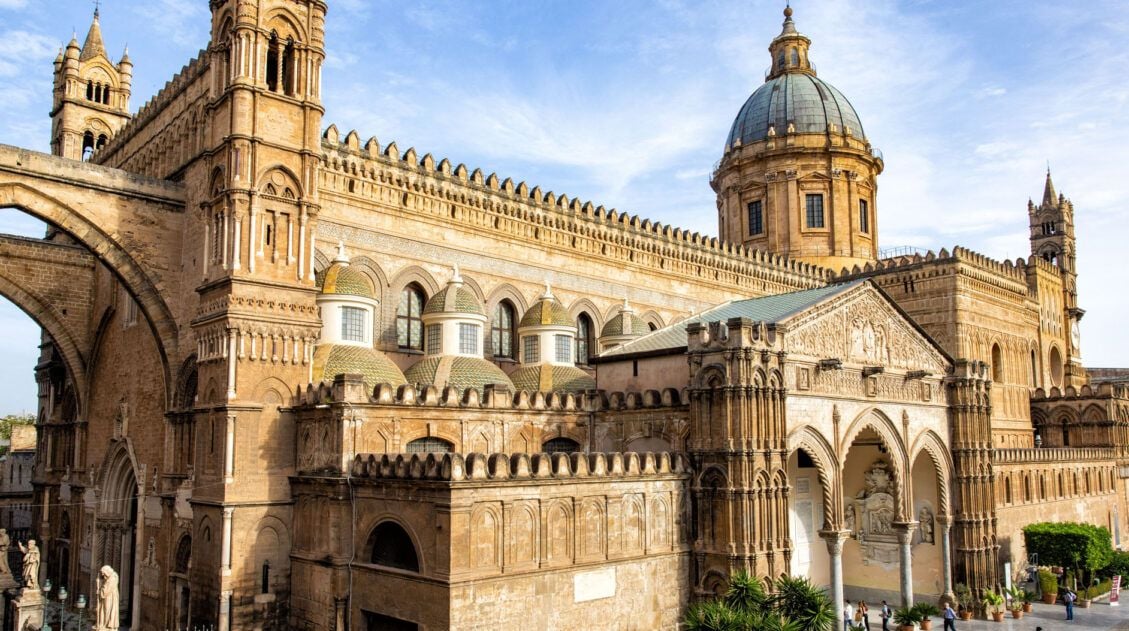
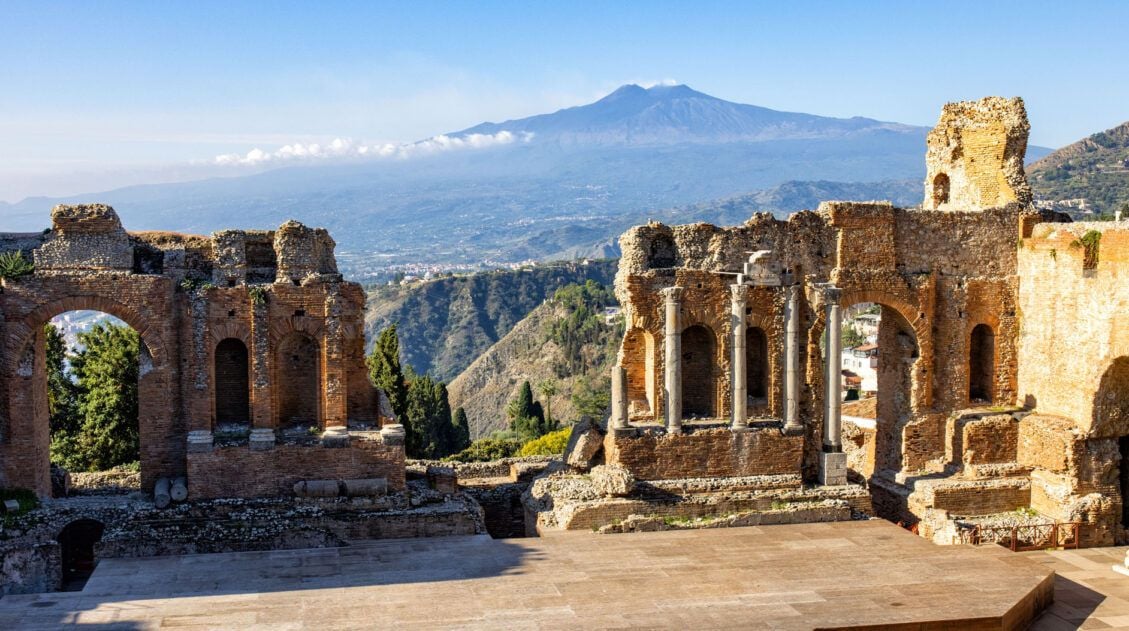
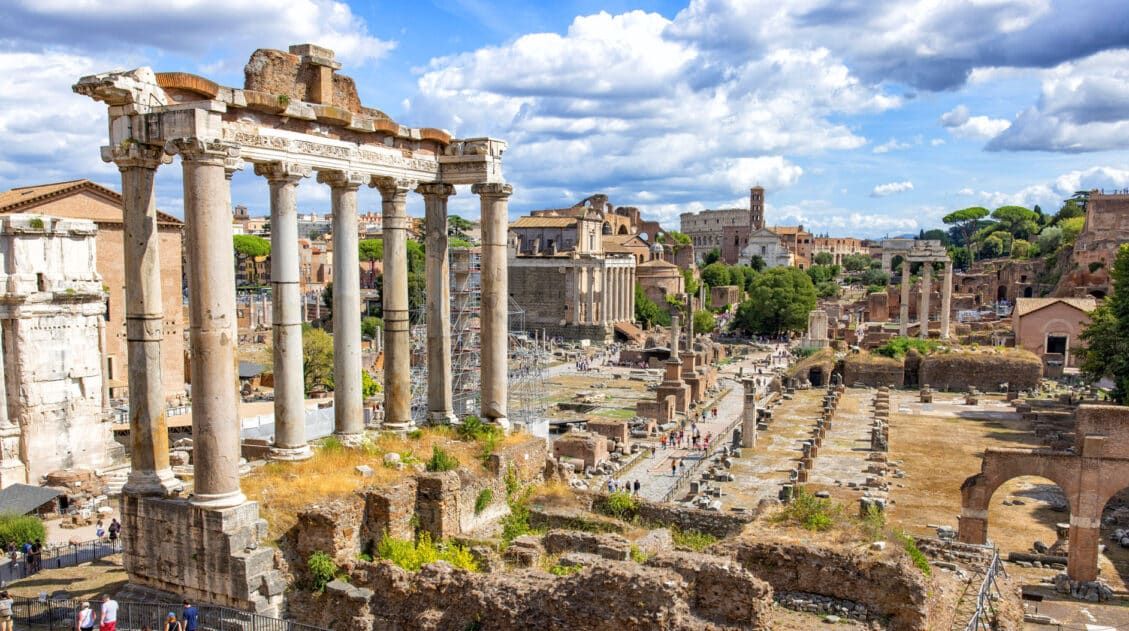
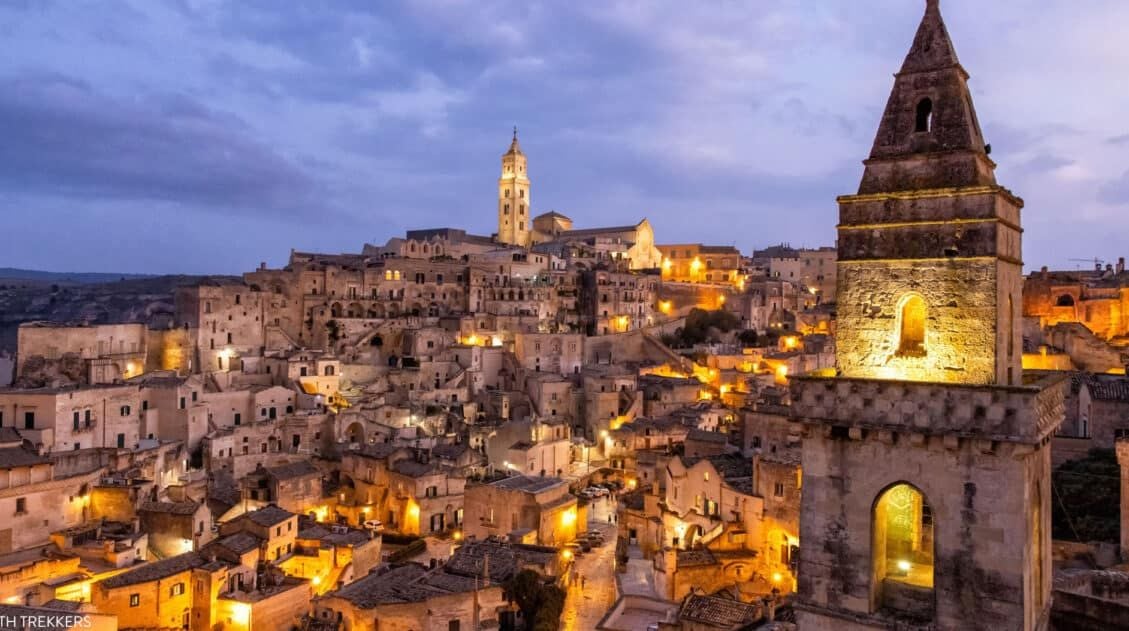
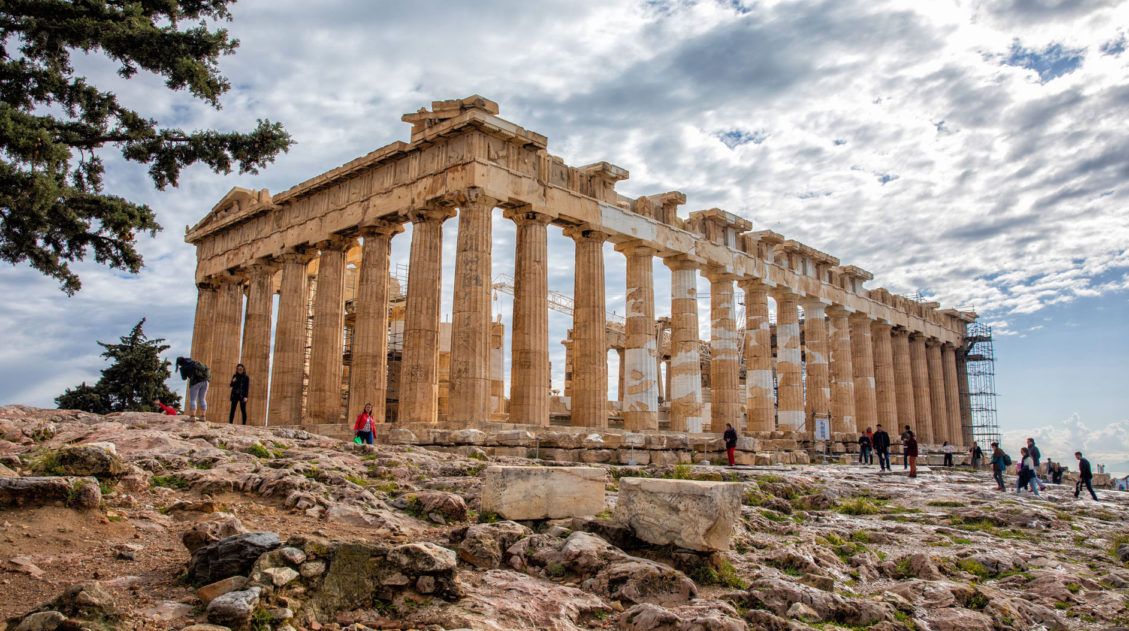
Comments 5